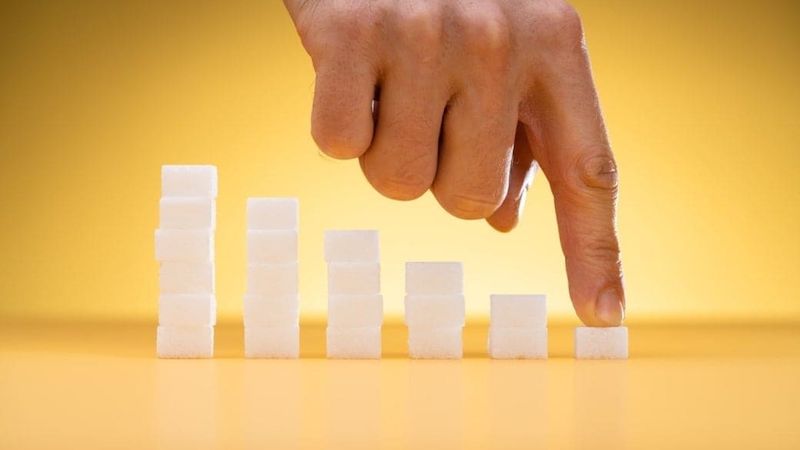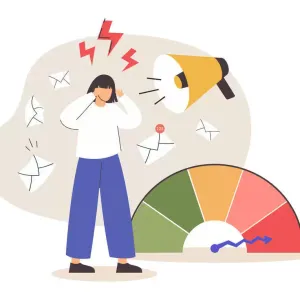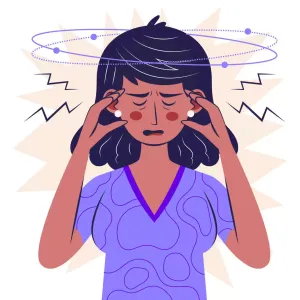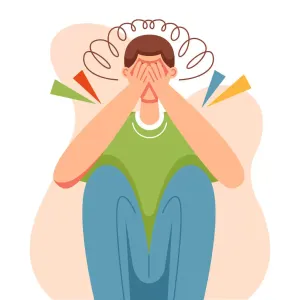

Our Review Process
Our articles undergo extensive medical review by board-certified practitioners to confirm that all factual inferences with respect to medical conditions, symptoms, treatments, and protocols are legitimate, canonical, and adhere to current guidelines and the latest discoveries. Read more.
Our Editorial Team
Shifa Fatima, MSc.
Author
Dr. Apoorva T, MHM.
MEDICAL ADVISOR
Reduce Sugar Levels Naturally
The most prevalent disease these days is diabetes. 3 in 4 adults have been diagnosed with this condition according to recent statistics. While the stats are alarming, they are not surprising. It is not uncommon to hear about the diagnosis of diabetes. Ever-so-often, we hear members in our own families talking about some relative who has been diagnosed with it. Diabetes is much more common than we think it is. Not only has the prevalence increased but also the age range that is affected has lowered significantly. Type 1 diabetes or T1D was primarily prevalent in children. Due to the dysfunctional pancreas, sometimes even since birth, young infants have to face the shocking consequences of this disease. Type 2 diabetes (T2D) on the other hand is considered a lifestyle disease primarily occurring in adults after the age of 35, although the global average is now shifting towards 32. Let us understand how to reduce sugar level or how to lower blood sugar. Read more about medications for diabetes
Table of Contents
What causes low blood sugar?
You could have low blood sugar for a variety of reasons, let’s take a look at what causes low blood sugar.
- Consuming alcohol.
- Overdosing the insulin.
- Not consuming enough carbs for your insulin dosage.
- Unplanned, excessive exercise without adequate food.
- Unbalanced quantity of protein, fiber, and fat in your meal.
- High altitude.
- Skipping meals, but taking your sugar medications. Read more about diabetes causes.
Tips to reduce sugar level
How this disease works is that the islet cells of the pancreas do not produce sufficient insulin or produce no insulin at all. Insulin is the hormone that breaks down the glucose molecules in the bloodstream thus keeping the parameters in check. As and when we eat, the carbohydrates break down in the form of glucose molecules which are then bound to the insulin that is secreted. Due to insufficient insulin, there is excess glucose in the blood which increases the blood sugar. Also read about pineapple for diabetes.
Therefore, if you have diabetes, the first and most direct consequence that any doctor will warn you about would be - blood sugar. How to lower blood sugar level is a task that you would have to learn to manage efficiently. There are several risks to fluctuating blood sugar levels. The normal range that is the universal average is 90-150 mg/dl. This range can be subjective from person to person, depending on their weight, other comorbidities, fitness, stress levels, hormonal changes, etc, due to which there may be a slightly different average.
There can be several reasons due to which blood sugar levels can fluctuate –
- Improper carb counting
- Excessive exercise
- Not enough insulin
- Illness/injury
- Stress
- Hormonal changes like – PMS, menopause, thyroid levels, etc
Hyperglycemia, or high blood sugar (mostly above 170mg/dl), has several potential risks. Even if in the short term it may not seem very potent or disturbing and all you may have to do is take your correction doses to feel better, the long-term effects of this issue can be fatal. From cardiovascular issues to neuropathy or retinopathy to kidney damage – hyperglycemia can present itself differently in different people.
Similarly, hypoglycemia, or what is dangerously low blood sugar, below 60-70 mg/dl has even more devastating consequences. If you have been diagnosed with diabetes, this is what you need to be on the lookout for. Doctors always warn against the potential symptoms and consequences of low blood sugar levels. Also read about high blood sugar symptoms. While they can be common, you need to work hard towards preventing them as, in certain cases, they can also lead to seizures and damage to the nervous system. While hypoglycemia can have long-term effects, it can also have life-threatening symptoms every time it occurs.
To learn more about your blood sugar values and affecting factors, checkout our blog 101 Guide - Healthy Blood Sugar Ranges.
Also know about yoga for diabetes control
Control Blood Sugar With Healthy Diet
Asking your endocrinologist how to reduce sugar level would receive an answer which would tell you to put a lot of attention and focus on your diet. This is because the carbs, maida, and sugar content in the diet have a direct impact on increasing blood sugars. Without a healthy diet, all the efforts that you may be putting in in terms of working out or regular walks, or even meditation and insulin, would be futile. Also know about prediabetes diet.
Manage your carb intake

Carbohydrate molecules break down and turn into glucose in the bloodstream. This is the reason why higher carbs could directly lead to an increase in blood sugar. If you have been newly diagnosed, you might be tempted to reduce your carbs in their entirety. This happens to most new diabetics before they learn to regulate their food intake. Stopping carbs or reducing them a lot suddenly could be what causes lower blood sugar in many people. Manage your carb intake by focusing on low-carb snacks, reducing the consumption of refined wheat flour, not eating sweets and candies, bread, biscuits, etc.
Eat more fiber

For diabetics, any food that has a low glycemic index would be ideal. Such food categories do not rapidly spike the blood glucose levels giving the external insulin time to work. Fibrous foods, therefore, are the best option. Pairing a low GI diet with a (moderately) high one could also be done. This would result in the satisfaction of the cravings and also help maintain a balanced diet. Fruits, salads, leafy vegetables, sprouts, etc. are the food items you should be targeting. To know more, check out our blog on Benefits of Resistant Starch on Blood Sugar Management and Weight Loss.
Control Blood Sugar With Exercise
Physical activity and regular movement of body muscles can be another helpful aspect if you are learning how to reduce blood sugar level. If you have been newly diagnosed, or know someone who is just starting, it would be primitive that they check their levels before and after working out. When you are still figuring things out, a high-intensity workout or even a regular one can have effects and can cause dangerously low blood sugar. If you are a diabetic and you have ever felt dizzy, nauseous, unusually breathless, or super tired during your workouts, it would be vital to use your glucometer rather than simply rely on your judgment. Some exercise options could be – aerobics, yoga, swimming, sports, or if you are not into any of these, going for a brisk walk would also do the trick.
Control Blood Sugar With Weight Control

Controlling sugar levels with weight control would help in better absorption of the insulin that you are taking extraneously. If you weigh more than the required amount concerning your height and age, it can cause you to take extra insulin. Additionally, it can also cause lethargy and other related issues that may affect glucose levels. Weight, even though underrated, is a very important aspect of sugar control.
Control Blood Sugar With Water
Drinking water up to 2-3 liters for an average adult diagnosed with diabetes is important. The benefits that you may reap out of this would be that these water molecules would carry oxygen to your cells, they would help in smoothening and cushioning the joints, it would protect the tissues and organs, and would also get rid of the toxins and ketones in case of high blood sugar.
Remember that this is a learning process, you will have to spend some time and energy trying to figure out what works for you and what doesn’t. Diabetes is a complex disease and it can be different for different people. What may work for someone in your family may not be the same for you. Use the methods of trial and error and master this roller-coaster of disease to the best of your capabilities.
Also read about the benefits of eating grapes in diabetes
How to control sugar level immediately?
Hyperglycemia is a condition when your blood sugar levels are elevated than normal. When your blood sugar levels are extremely high, it means that your insulin levels are low, which leads to a medical complication called - Diabetic Ketoacidosis (DKA). Characteristic symptoms of this condition are :
- Extremely dry mouth
- Breathing difficulty
- Nausea and dizziness
- Fruity-smelling breath
In such conditions, diabetic patients must understand how to control sugar level immediately. Let's take a look at the best methods to follow that act fast and bring down your sugar levels almost immediately.
1. Take the prescribed insulin shot:
As we know that diabetes is a condition that’s related to low levels of insulin production or the inability of the body to utilize the produced insulin effectively. The quickest way to reduce sugar is by taking rapid-acting insulin, which is also the best treatment for hyperglycemia.

However, you must consult your doctor to understand the dosage of the insulin that you must administer at such times. After taking the insulin injection, it’s advisable to monitor your blood sugar levels after 30 minutes to make sure it’s stabilized.
2. Take the forgotten sugar medicine:

If you have type-2 diabetes, your doctor may have recommended medication to keep your blood sugar levels in check. Missing your sugar medicine dose may cause you to become hyperglycemic. If that’s the case, then take the medicine right away which will help you to bring your sugar levels under control.
3. High-intensity exercise:
The quickest natural way to reduce blood sugar is through exercise. Exercise boosts the body's capacity to turn glucose into energy and reduces insulin resistance. When you exercise, your cells utilize glucose for energy while muscular contraction, irrespective of whether insulin is present or not. This causes your blood sugar level to drop immediately.
You must engage in an activity that causes your heart to beat more quickly than usual for this to take effect. Activities such as brisk walking, jogging, or high-intensity training are good examples.

How to Control Diabetes?
Type 2 diabetes is usually an unhealthy lifestyle-induced condition. Blame it on a sedentary lifestyle, stress, erratic eating habits, or consuming junk, a lot of people are falling prey to this disease. If you also fall into this category, then we would like to tell you not to panic, as with some lifestyle adjustments you can reduce diabetes, and in long term even reverse it. Also know how to reverse prediabetes.
Whether you are prediabetic or are already a diabetic patient, the below tips can be your answer to how to reduce diabetes.
1. Start by losing weight: Like it is said, it is never too late to start. Several studies have indicated that losing those extra pounds has a direct relation with reducing diabetes. Obesity leads to several health complications apart from diabetes, hence it’s important to stay fit and active at all times. Diabetic patients are often advised to engage in physical activities that increase their heart rate, this helps in regulating blood sugar levels.
To stop the disease from progressing, the American Diabetes Association advises prediabetic and diabetic individuals to lose between 7% and 10% of their body weight. Doctors also recommend setting a realistic weight loss goal that can be easily attained healthily.
2. Clean eating: Switching to healthy and mindful eating is another key to reducing diabetes. Replace unhealthy junk food like chips, burgers, pastries, samosa, etc. with nutritious food items like fruits, green leafy vegetables, nuts, and seeds. If you are wondering how does this help? Then let us tell you that plant food is a rich source of vitamins, minerals, and dietary fiber. These help in boosting metabolism, and slow sugar absorption which causes blood sugar levels to drop.
Avoid food that has a high glycemic index (GI) like potatoes, white rice, bread, pasta, etc. These food items have abundant carbohydrates that cause the blood sugar level to fluctuate.
3. Include healthy fats in the diet: Fats are an integral part of any diet. You may have heard of ‘good fat’ and ‘bad fat’. Your diet should be inclusive of ‘good fat’ which is nothing but unsaturated fats for weight and diabetes management. Ghee, coconut oil, olive oil, nuts, flaxseeds, and oily fish like salmon, mackerel, etc. are some examples.
4. Don’t get lured by fad diets: Today’s world is filled with different diet plans that guarantee weight loss in unrealistic timelines. Plans like keto, GM diet, etc… may get a couple of kilos off your body temporarily and in a quick manner. But in reality, these diets are not sustainable and you will end up going back to the same eating habits and putting the weight back on. As a diabetic patient, your ultimate goal is to make a lifestyle change, and that can happen only when you stay consistent and disciplined with your routine. Also know about sugar free biscuits.
Best treatment for diabetes
We often wonder - how to reduce blood sugar naturally. Maintaining a healthy weight with a good diet and exercise routine is the secret for diabetes management naturally. Diabetic patients should be mindful of what they are eating, and how much they are eating. Including fresh vegetables, fruits, whole grains, lean meat, and dairy products will provide much-needed nourishment to the body to achieve an optimal weight. Regular exercise is also a must, as it makes the body more sensitive to insulin. Activities like walking, playing a sport, jogging, dancing, skipping, or swimming should be undertaken on a daily basis.
Other treatments include:
Administering insulin: Especially type 1 diabetic patients are required to take insulin shots to survive. Insulin is always administered intravenously and never taken orally. Insulin pumps are also an alternative. The pump is a small, externally worn device around the size of a compact telephone. A catheter is implanted beneath the skin of your belly and connected by a tube to the reservoir of insulin.
Oral drugs: Type 2 diabetes can be often managed by taking oral drugs to regulate the blood sugar level. There are several drugs available, however, it’s best to consult a doctor to know the right composition that will work for your body and then take the advised dosage.
Transplantation: An option for some persons with type 1 diabetes is a pancreas transplant. This treatment method is still being researched. If pancreatic transplant is successful, then the patient need not be on insulin anymore.
Bariatric surgery: Bariatric surgery may be beneficial for some type 2 diabetics who are obese and have a body mass index over 35. Blood sugar levels have significantly improved for those who have undergone a gastric bypass. However, the long-term dangers and advantages of this surgery for type 2 diabetes are not yet understood.
Also read about uses and side effects of sugar tablet
List of sugar medicines for diabetics
As we know that diabetes is a condition where the blood sugar level elevates. This happens when the body is not producing enough insulin or is not effectively utilizing the already-produced insulin.
There are two main types of diabetes, Type-1, and Type-2 and both types of patients need to take medication for sugar treatment.
Medication for Type-1 Diabetes
The major challenge Type-1 diabetic patients face is that the pancreas is unable to secrete insulin on its own. Hence, taking insulin is the most common medication recommendation for these patients. It can be administered to patients with the help of an insulin pump or an injection. There are various insulin varieties. Your body's sensitivity to insulin and the degree of your insulin shortage determine the type of insulin you require. They consist of the following:
- Short-acting insulin: Also known as regular insulin, this takes about 30 minutes to reach the bloodstream. Some examples are - Humulin R U-100 and Novolin R FlexPen.
- Rapid-acting insulin: This insulin acts quicker than regular insulin, and starts it’s action within 15 minutes of being administered. Some examples are: Insulin Aspart Injection, Apidra (insulin glulisine), Admelog (insulin lispro).
- Intermediate-acting insulin: About 2-4 hours after use, intermediate-acting insulin starts to show effect. Some examples are: Humulin N U-100, Humulin N KwikPen, Novolin N.
- Long-acting insulin: This type of insulin medication reaches your bloodstream in a more gradual manner. Some examples are - Tresiba FlexTouch, Levemir, Semglee-yfgn.
- Amylinomimetic injectables: These classes of drugs are used when insulin alone is unable to lower blood sugar levels. It functions by slowing the time it takes for your stomach to empty itself. Additionally, it lessens the hormone glucagon's post-meal production. These steps can help you reduce blood sugar level.
Medication for Type-2 Diabetes
In type 2 diabetes the pancreas can secrete insulin on its own but it is not being effectively used. The treatment’s objective here is to improve the way your body uses insulin or to utilize the excess glucose in your bloodstream.
- Doctors often prescribe oral drugs to type 2 patients, however, based on the severity, insulin injections can also be suggested. Some of the common medications used are:
- Biguanides (Kazano, Synjardy, Glucovance)
- Dopamine-2 agonist (Cycloset, Parlodel – bromocriptine)
- Dipeptidyl peptidase-4 (DPP-4) inhibitors (Nesina, Tradjenta, Glyxambi)
- Glucagon-like peptide-1 receptor agonists (Trulicity, Adylyxin, Byetta)
- Meglitinides (Starlix, Prandin)
- Sulfonylureas (Amaryl, Duetact, Glynase)
- Thiazolidinediones (Oseni, Actoplus Met, Actoplus Met XR)
Bottomline
If you are someone who is diagnosed with diabetes, you know how tough it can get to lower blood sugar or mange blood sugar level. Here are a few ways you can achieve this important goal - Monitoring levels regularly for any hypo and hyperglycemic symptoms, Maintain a healthy diet, checking water intake,keeping a tab on weight and many more. Read our elaborate guide to know more. Also know how to reverse diabetes.
FAQs
What is considered dangerously low blood sugar?
A blood sugar level that is below 70 mg/dL is considered a warning sign to immediately take steps to increase it. If your blood sugar level further drains to 50mg/dL it can lead to severe complications. Symptoms like dizziness, trembling, etc. If immediate action is not taken to improve the blood sugar level then it might cause a person to lose consciousness.
How do I increase blood sugar levels naturally?
Low sugar levels can be spiked up immediately by consuming fruits like bananas, oranges, grapes, pineapple, etc. It is vital to consume the right proportion of these fruits. Having one teaspoon of sugar diluted in water might also help to increase blood sugar levels. However, if natural techniques do not show results immediately then you should consider taking medications that boost blood sugar levels.
What food can lower blood sugar quickly?
Diet is an important part to lower blood sugar of the body. A diet that included food items like broccoli, pumpkin seeds, okra (bhindi), nuts, flax seeds, chia seeds, berries, avocados, citrus-rich fruits like lemons, and oranges, etc. in the correct proportion can help you to lower your blood sugar levels. Also know about fasting blood sugar levels.
What are the best home remedies for diabetes?
Diabetes home remedies are very simple and effective. The best ones include consuming fenugreek-soaked water in the morning, including superfoods like green leafy vegetables, bitter gourd, and cauliflower in the diet that can regulate the blood sugar level. Also know about treatment for diabetes in ayurveda.
Is there any cure for diabetes?
There is no cure for diabetes, but it can be managed effectively with proper treatment and lifestyle changes. Here are some tips to manage diabetes
References
- https://www.medicalnewstoday.com/articles/322861
- https://www.healthline.com/health/diabetes/how-to-lower-blood-sugar-quickly-emergency
- https://www.cdc.gov/diabetes/managing/manage-blood-sugar.html
- https://www.healthline.com/nutrition/15-ways-to-lower-blood-sugar
Disclaimer
This website's content is provided only for educational reasons and is not meant to be a replacement for professional medical advice. Due to individual differences, the reader should contact their physician to decide whether the material is applicable to their case.
More by Shifa Fathima

अर्जुनरिष्ट के फायदे, खुराक और नुक्सान

मधुमेह के लिए मधुनाशिनी वटी: उपयोग, लाभ, खुराक और दुष्प्रभाव|

मधुमेह को नियंत्रित करें भारतीय आहार से





